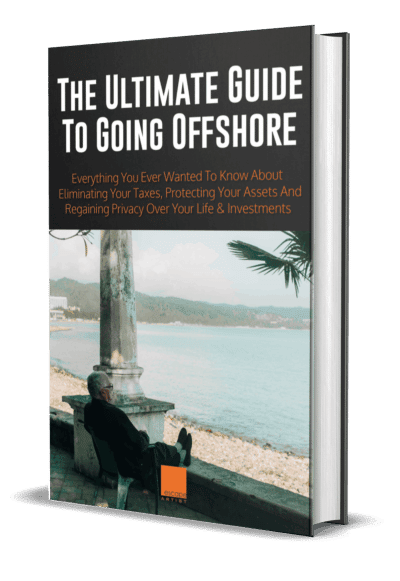
Thomas, from the U.S. Virgin Islands, writes:
Dear Ambassador Nagel,
I’m working with several partners on a blockchain project, including issuing our own token, which we think could really be successful. We’d like to establish our own bank to be a primary interface between crypto and fiat currencies. What would be the steps to open an offshore bank for this purpose, and what would be the approximate set-up costs?
Sincerely,
Thomas T.
U.S. Virgin Islands
—————————–
Dear Thomas,
Thank you for your very intriguing question. There really are a lot of nuances associated with the crypto aspects of your question, but we will have to leave those for another day. Your primary question concerns creating an international or offshore bank to interface with your clients as well as the various crypto exchanges around the world. I’ll try and focus on the banking side of things this week and then elaborate more on the crypto aspects of your question in next week’s article, if my publishers will let me, as these are two related but quite separate issues.
When it comes to offshore banking, there are really two main kinds of banks, referred to as class A banks and class B banks. Class A banks are perhaps what you’d think of as a traditional full-service bank. It takes deposits, makes loans, does transactions, etc. A class B bank, on the other hand, is sometimes referred to as a “captive” or limited scope banks, which conducts business on behalf of its owners and a set number of clients as prescribed by its operating license. My firm has been active in the area of international commercial law and banking law for 29 years, and I have established, advised, and participated as a board member on numerous banks of both class types over my legal career. The ultimate decision on what type of bank license you need will be driven by the type of business you want to do. For the most part, if your bank will manage only the finances of your other businesses internally, the captive B class bank may suffice. If you plan to interface with third parties and the public in general, however, then you really need a class A license. As you’ll see below, the capitalization and regulatory compliance issues are quite different for the two classes of banks.
In the case of an A class bank, you’ll need to have substantial capitalization (with a minimum of $5-10 million depending on jurisdiction), a fixed location with personnel (including operations, administration, customer service, and compliance), hardware, software, detailed Anti Money Laundering (AML) protocols, Know Your Customer (KYC) procedures, an outside auditor, and a functioning bank board.
 In the case of a B class bank, the capitalization requirements are substantially less ($500,000 to a million). Many of the requirements outlined for a class B also apply, however, regulators generally allow these items to be handled on an outsourced third-party basis. Additionally, the standards aren’t as high once all of the parties have been vetted by the countries regulatory body.
In the case of a B class bank, the capitalization requirements are substantially less ($500,000 to a million). Many of the requirements outlined for a class B also apply, however, regulators generally allow these items to be handled on an outsourced third-party basis. Additionally, the standards aren’t as high once all of the parties have been vetted by the countries regulatory body.
In creating an international bank, I would divide the overall process into three stages, namely the pre-submission stage, the post-approval/pre-opening stage, and the post-opening stage. I would list the following activities that need to be handled at each stage as follows:
1) Pre-Submission
- Creation of legal/corporate entity or entities comprising the bank, including the ownership holding structure.
- Creation of your business plan, what you are trying to do, and showcasing what is your specific niche in the marketplace.
- Creation of your initial “Anti Money Laundering” (AML) guidelines based on the specific jurisdiction and international standards.
- Creation of your initial “Know Your Customer” policies and procedures based on the specific jurisdiction and international standards.
- Establish outsourcing procedures and agreements where applicable. Contact third-party vendors and conduct RFP processes for outsourced services.
- Review applications for potential key employees to hire.
- Creation of the bank’s board of directors.
- Select the bank premises.
- Select outside auditors and establish accounting and audit policies and procedures.
- Select local banking counsel.
- Meet with Central Bank or monetary authority and lobby bank application through the approval process.
2) Post-License Approval, Pre-Opening Services
- Apply for U.S. GIobal Intermediary Identification Number (GIIN) with the U.S. Internal Revenue Service.
- Apply for and lobby for approval of international correspondent banking relationships.
- Establish bank accounts, local and overseas treasury, and overseas correspondent as needed.
- Establish brokerage account relationships as needed.
- Establish physical vault storage facilities for client cash, gold, and other high-value items.
- Create pre-opening audit.
3) Post-Opening Services
- Finalize employee team.
- Manage correspondent bank relationships, local counsel, and third-party vendors.
- Begin routine corporate governance, board meetings, compliance reviews.
- Start marketing and advertising campaign.
- Establish accounting standards.
With regard to the costs and expenses to open a bank, there is a fairly broad spectrum depending on jurisdiction and class of bank. The following costs are estimates only for a standard class A startup bank. In some countries, it is possible to purchase banking packages which handle many of the items outlined above for a set price, which could be lower than the costs outlined here. I would caution you, however, that just because you can obtain a discounted banking license in some jurisdictions, it doesn’t mean that you’ll be able to conduct the banking business you wish to do through international correspondents. Many of the global correspondents are wary of such jurisdictions to begin with and, if the capitalization is too low for their standards or the AML/KYC guidelines do not meet their standards, then they won’t permit the bank to use its international wire transfer facilities.
I would estimate that the turnkey fees to handle the items in the pre-submission section for most class A jurisdictions would be $250,000. I have seen discounted “package” deals by promoters in some jurisdictions with pre-made business plans and standard AML/KYC guidelines for as low as $100,000.
For the post-license, pre-opening services, some promoters and agency companies are willing to discuss a variety of service options including standard hourly rates, contingency fees based on successfully securing the necessary financial relationships for your bank or, in some cases, incremental and ongoing transaction fees designed to help minimize upfront expense, but which drive up your long-term transactional costs going forward.
For post-opening services, these activities can be brought in-house or be purchased from outside consultants on an as-needed basis. Registered agent companies can provide board and corporate services on a fixed meeting, monthly, or annual fee basis. Outside Legal, accounting, and audit services are generally provided on an hourly basis.
I trust that you’ll find this email to be helpful to you as you consider your options for establishing your own bank. Your project sounds like a very good one and my firm would be very pleased to guide you now and throughout the entire process should you require our assistance. Feel free to contact us at the below number or email.
Thank you once again for your very good question and interest in my law firm for assistance with this process.
Sincerely,
Joel M. Nagel
Ambassador (ret)
Like Our Articles?
Then make sure to check out our Bookstore... we have titles packed full of premium offshore intel. Instant Download - Print off for your private library before the government demands we take these down!





